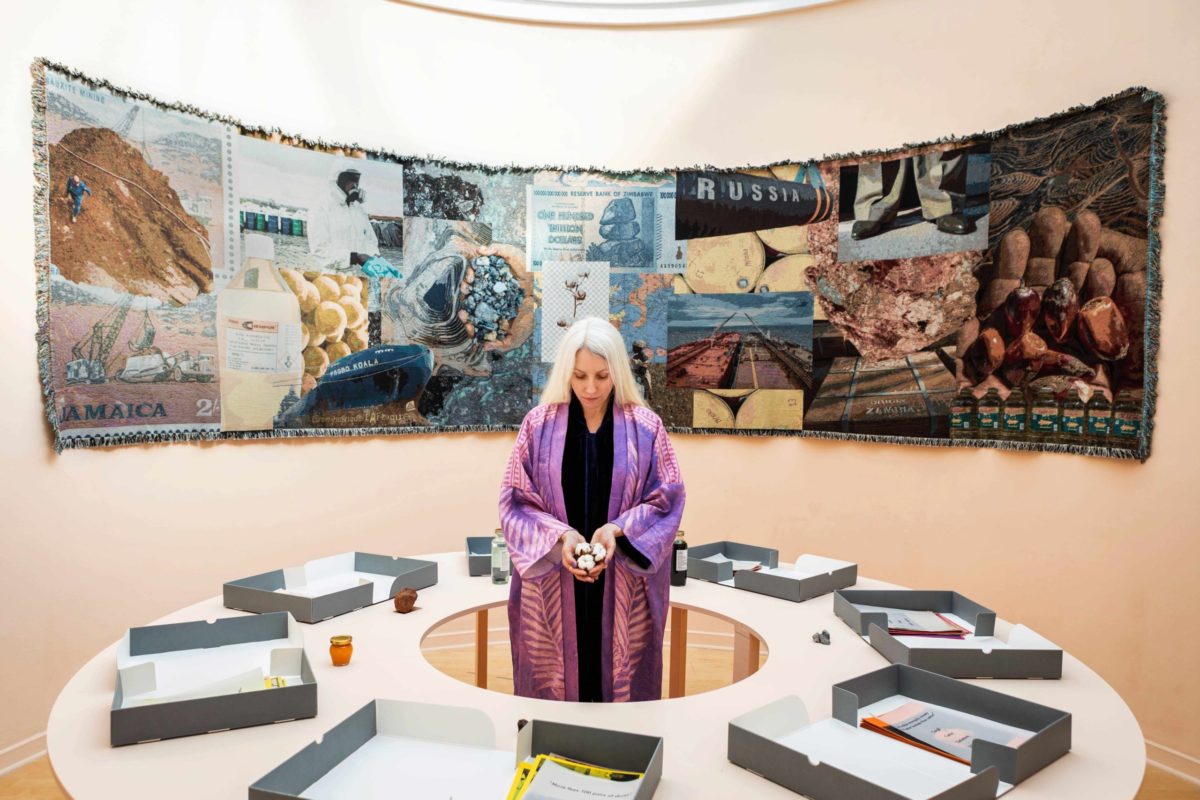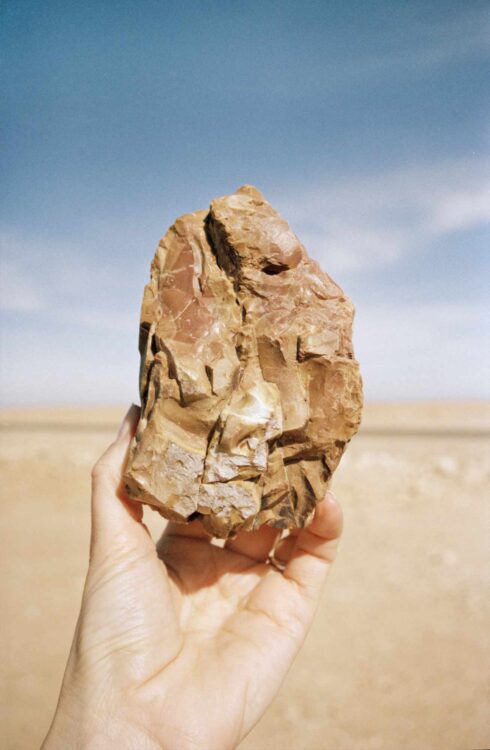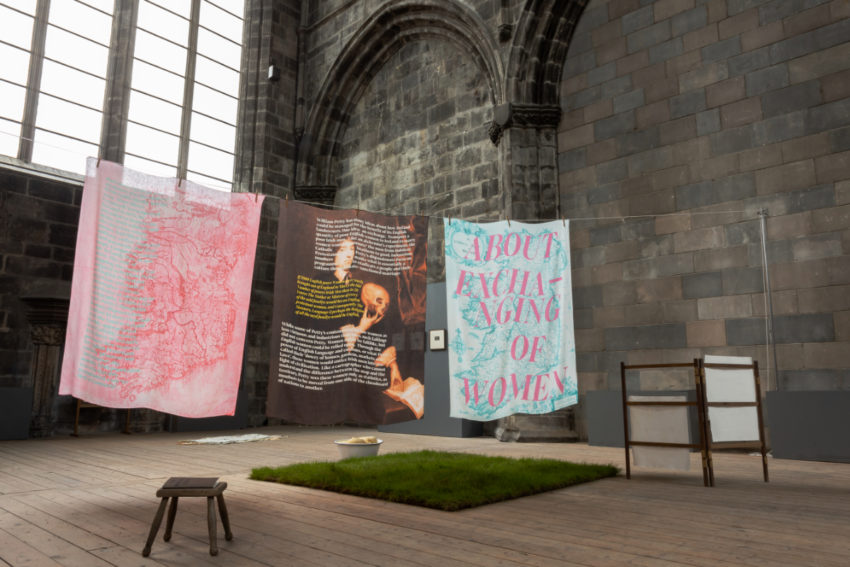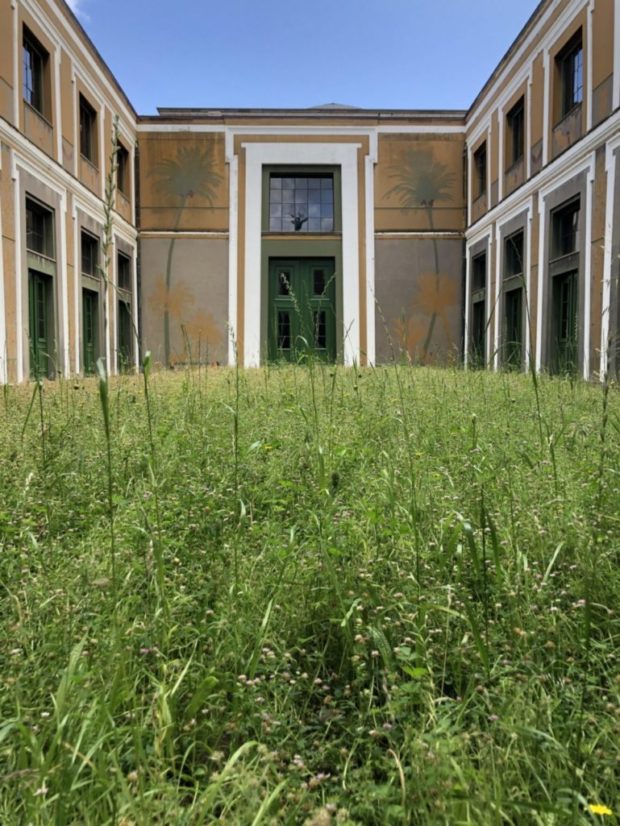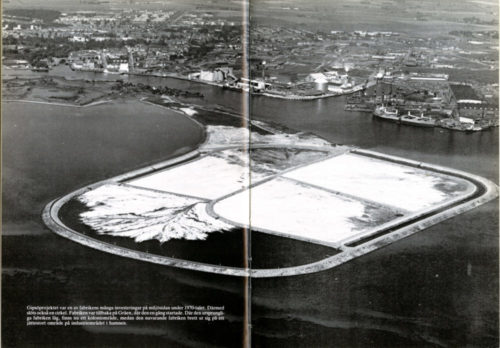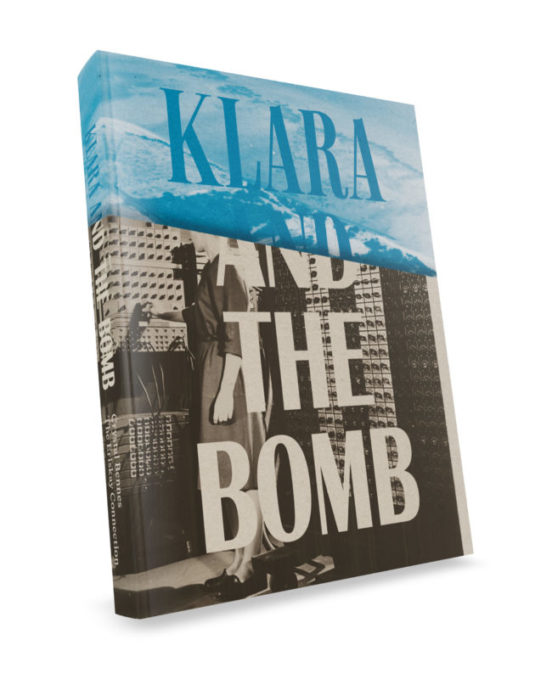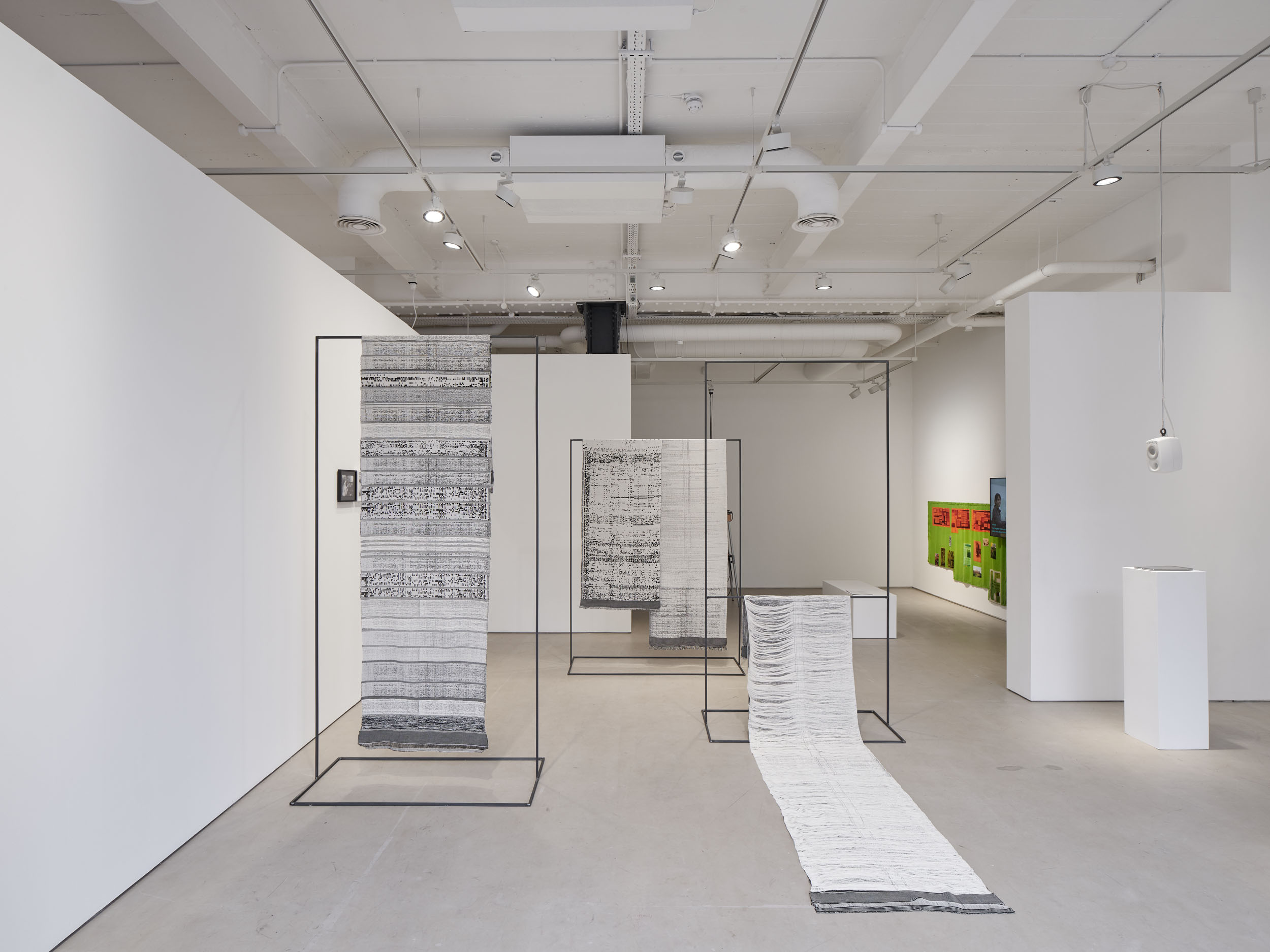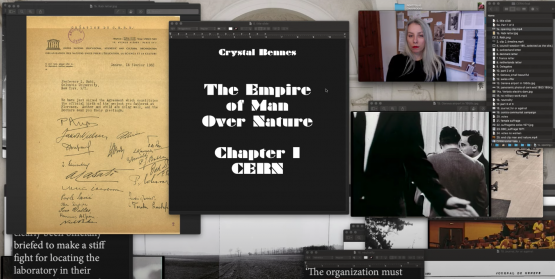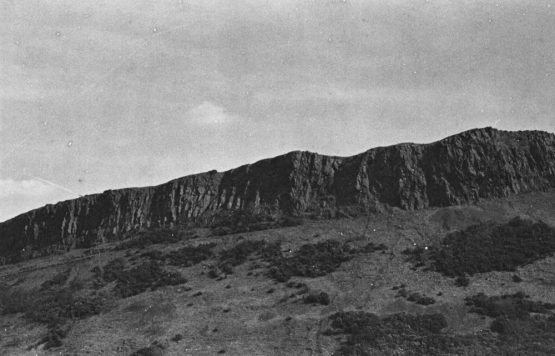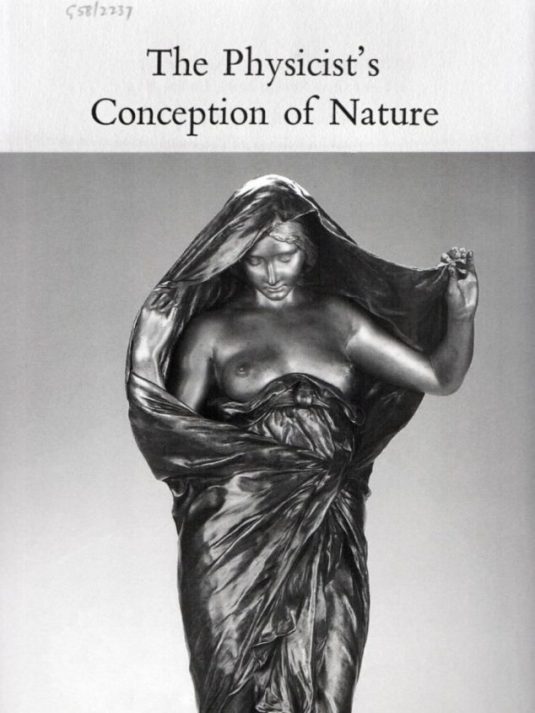Me and Tom Jeffreys on the 56th Venice Art Biennale.
This conversation originally appeared on FAD Art, where you can still, should you so wish, view it in all its original glory accompanied by illustrative photographs.
Art, art, art, Aperol, ice cream, and extremely sore feet: yes, we’re back for the 56th instalment of the Venice Biennale. And this time, it’s political.
Entitled All the World’s Futures, the central exhibition has been curated by Okwui Enwezor and it is SERIOUS! None of that obsession with dusty old museums that Massimiliano Gioni did last time. This time, it’s war and politics, migration, violence, poverty and chaos. The world is a mess. What can art do? Well, indeed…
Crystal Bennes: It’s ironic because last time I think I said something about the Biennale being utterly devoid of anything interesting to say about the contemporary moment. On the surface, this Biennale is all about the contemporary moment (how I wish I never used that phrase!), but I still don’t feel like many of the artists have much to say beyond surface-level triteness.
Tom Jeffreys: I agree, things certainly got off to a clunky start. The first room aims for immediate impact, but feels hollow and showy. Adel Abdessemed’s clusters of enormous knives are repeatedly knocked over by giggling art types, while on the wall are a bunch of facile neons by Bruce Nauman. Neon text art is almost invariably trite and Nauman’s efforts here are certainly no exception. One piece is emblazoned with the words “Death, Love, Hate, Pleasure, Pain, Life”. I mean, yawnerama!
From here it’s a cacophony of noise and movement. Flickering lights, metallic drumming and the clanking and whirring of sundry mechanical constructions all crammed up tight together: the intended effect, I’m guessing, is a withering critique of the military-industrial complex. It feels more like a steam-punk trade fair.
CB: Or just a trade-fair trade fair. It was funny how many installations reminded me of the worst of the Milan Furniture Fair. Thea Djordjaze’s A glass of anger, for example, was like a badly-done version of the [Danish furniture brand] Hay catalogue. And I wanted to bash my head against the wall when I turned the corner onto Barthelemy Toguo’s Urban Requiem. I’m empathy-challenged at the best of times, but oversized stamps saying things like “I am human” do absolutely nothing for me. In fact, it primarily serves to convince me that many contemporary artists simply aren’t capable of thinking deeply about political issues. Or, if they are, they certainly aren’t capable of translating that thinking into anything visually compelling.
TJ: Things do get better though…
CB: Really? Then you are far more sympathetic than I.
TJ: Well, there were a bunch of works exploring graphs and mapping that I liked: Maja Bajevic’s commodities graphs on textiles, for example, entitled Art, Crafts, and Facts. Also Ji Dachun’s acrylic paintings, Tiffany Cheung’s beautiful ink and oil maps charting the movements of Syrian refugees, and Ayoung Kim’s singers in a darkened room, which revelled in the excellent title, Zepheth, Whale Oil from the Hanging Gardens to You, Shell 3.
CB: There was a lot of music, wasn’t there! It’s interesting how certain media appear (and re-appear) seemingly out of thin air. Particularly since the cliché is art-school rock bands, I found myself wondering where this turn to opera and classical music was coming from. Some kind of appropriation of status? Or is it because it represents newish territory? Curious.
TJ: I think there were a couple of things going on. All that noise – clanging bells (Theaster Gates), gunfire (Chantal Akerman) – seemed designed to create an overwhelming Tower of Babel effect. I also think the appeal to popular music (by the likes of Jeremy Deller) is an attempt to overcome worries about arty elitism. There was one place it really succeeded though…
CB: …the Congolese film!
TJ: Exactly!
CB: We both loved this. Probably for different reasons. I’m not at all a Carsten Höller fan, so it was strange to find myself charmed by this work (Fara, Fara, 2014). Docu-style video work has been swirling around a-plenty in recent years, and this collaboration with Mans Mansson does what the best of them do: tells a story about something fairly unknown to most of its audience, with a twist of whimsy and a splash of narrative disconnection. You learn something about a beautiful style of Congolese music; there’s a sort of narrative, but you’re never quite sure what’s going on; it looks the business. My one caveat was that I felt the almost camera-phone-style footage of the second hald jarred too much with the polished aestheticism and slight absurdity of the film’s first half.
TJ: My worry was that the energy and dynamism gets kind of lost once you put it in an art gallery. But I still thought the film was great.
CB: Me too! Apart from that, I liked very little in the Arsenale. Steve McQueen’s 2014 film Ashes was a neat counterpoint to Höller’s film, also very beautiful to look at and quite poignant. I also really liked seeing Argentinian artist Ernesto Ballesteros, in a little roped-off, makeshift studio, building and flying delicate ultra-light airplanes. The planes were fine to look at, but I liked that there was a space where someone was actually working, visibly making something. It reminded me how hermetic so much of the contemporary art world has become about making – both in terms of the quantities of labour farmed out to anonymous craftspeople, but also how cagey many artists are about keeping technical developments as closely-guarded secrets.
TJ: That cropped up quite a lot. Obviously, with the reading of Marx’s Das Kapital at its heart, the issue of labour was a central theme. A whole room in the Giardini devoted to the massive photographs of Andreas Gursky crystallised the point: from workers in a Vietnamese furniture factory to clamouring brokers on a global trading floor.
CB: Yes, it’s interesting the ways in which labour crops up as the theme of a lot of these works, but still so often what’s lacking is a broader discussion about the increased drawing of lines between artists – who come up with ideas – and makers – who actually execute the work without getting any credit for it. It was interesting to see some projects – like John Akomfra’s Vertigo Sea – have a long list of credits at the end, and then other projects – like Cyprus’s Christodoulos Panayiotou, which I really liked – didn’t include any!
Anyway… Of all the Marx-flavoured work, I most enjoyed Alexander Kulge’s triple-screen video installation, News from Ideological Antiquity – I wish now that I’d stayed to watch more of it. Plenty of other people have already pointed out the strange irrelevance of the Marx-fetish at the heart of the central exhibition (why not Thomas Piketty’s Capital instead, curator Gianni Jetzer suggested, rather brilliantly). Also, it’s funny that when we went to watch one of the readings of Das Kapital, there was a terrifying bug-eyed woman on stage screaming. I mean, ok, it was a performance but creepy!
TJ: It was certainly loud. My favourite part of that was watching the rest of the audience. One rich, middle-aged dude in a panama and his model wife started giggling uncontrollably and had to beat a hasty retreat. Performance art not for everyone I guess. Anyway, to the pavilions!
CB: Urgh, the pavilions. Can’t we just skip this part? They were so bad this year. So, so bad.
TJ: There were a few things we liked in the Belgian pavilion, no? I really loved Sammy Baloji’s Essay on Urban Planning – a series of photographs that alternated between aerial views of hospital compounds and pinned flies collected by local workers. Nature, colonialism, social control: all my favourite things!
CB: Yeah, they were alright. I forgot that the James Beckett piece (Negative Space: Scenario Generator for Clandestine Building in Africa) was in there too. God, that was flipping brilliant. Beautifully slick robotics slid back and forth picking up little wooden blocks and setting them on various plates, composing negative spaces of Modernist building typologies across Africa, hinting at clandestine uses of negative architectural space. Complex ideas, presented beautifully. That’s what I love to see.
TJ: Meanwhile, Céleste Boursier-Mougenot set up a bunch of moving trees inside and outside of the French pavilion.
CB: That was disappointing for me as I was so looking forward to it. I loved his installation at the Barbican in 2010 with the finches and guitars. I also remember, the same year, being simultaneously enchanted and freaked out, stumbling upon his harmonica-playing hoovers at about four in the morning on Nuit Blanche in Paris.
TJ: Bringing trees into galleries does seem to have become a thing. Berlinde de Bruyckere did it for the Belgian pavilion in 2013. This time, there was Robert Smithson’s 1979 piece, Dead Tree, in the Giardini, Graham Fagen’s bronze rope-tree for Scotland, and Siobhan Hapaska’s olive trees on brass wheeled frames for Azerbaijan. Of course, the Nordic pavilion can’t help it: three trees are permanent fixtures in the beautiful Sverre Fehn-designed space.
CB: Well, there weren’t any trees in Heimo Zobernig’s minimal intervention in the Austrian pavilion. God, this was boring. I mean he put in a false ceiling and a false floor, big flipping deal! I think Art Review called it “understated”. And how!
Being an opera lover, I really wanted to like C.T. Jasper and Joanna Malinowska’s ‘Halka/Haiti’ project for the Polish pavilion, but I just don’t think it quite worked. The ugly beast of representation reared its head and the whole thing was tainted for me by a pervasive sense of do-gooding, self-satisfied artists. To be fair, this probably had more to do with the video than the project. Had it been performed live, as well, even if only for the Vernissage, some of those problems might have dissipated.
TJ: Yeah that one was pretty tedious. Not as bad as Egypt though – not by a distance. I briefly had a desk in the office of a Shoreditch branding agency – it was almost identical, right down to the fake grass and fetish for Apple products. Ghastly.
CB: True that. I was also looking forward to Adrian Ghenie’s show in the Romanian pavilion. I remember seeing his 2011 exhibition at Haunch of Venison in London and thinking it was sublime. I don’t know what happened between then and now, but the work has definitely lost some of its appeal for me. Partly, I think I was disappointed that the show was almost entirely comprised of old stuff – only two new pieces. There was a lot of that this year overall. In the Biennale world of works tacitly being not for sale, this show felt like a left-overs commercial sell off. “See in Venice, buy in Basel” indeed.
TJ: Tell me about it! How many old Ed Burtinsky works did we see?
CB: Too many! Most of the other pavilions for me were a litany of wtfs?
Denmark: Danish Ambassador’s Residence meets Open House. Wtf?
Japan: Endless maze of red string and keys representing memory in an Instagram special. Wtf?
Russia: An oversized fighter pilot mask and some graffiti wallpaper. Wtf?
Swizerland: Pepto Bismol. Wtf?
Italy: Just wtf?
Ireland:Great concept, great press release, a table full of salad. Wtf?
TJ: And don’t even get me started on Great Britain.
CB: Well, then, I won’t.
TJ: Oh ok, if you insist. Firstly: why Sarah Lucas, who hasn’t done anything interesting in decades? Luckily, she proves the point by producing exactly the same unthinking, unthreatening puerility that she’s been trotting out for an entire career. But this time *gasp* in bronze. OMG. Luckily she painted the walls a nice bright yellow which will look cracking in the PR shots and also complemented my suit rather nicely. What really summed it up for me was the sight of washed-up, mullet-sporting, aristo perma-douche, Dan (Viscount) Macmillan told off by the gallery attendant for gurning with some young model too close to a sculpture of a cock and balls. It just all felt so tiresomely ‘90s. I mean, who commissioned this: Dylan Jones?
CB: At least last year, we got a free cup of tea!
TJ: Thankfully, after all the relentless focus on the contemporary, it was over to Palazzo Fortuny for something a little different. Proportio explored ideas about geometry across the history of art, architecture, science and more. It was like a Pablo Bronstein wet dream.
CB: Ha! I’m not sure it was quite as good as that!
TJ: There was loads to love, I thought. Beautiful books from Durer and Vesalius; a wonderful, large-scale mixed media painting by Antoni Tapies; an Albers square painting, spot-lit and glowing against faded floral textiles; even a newish piece by Anish Kapoor – 2014’s Gathering Clouds – that reminded me in its grey, disorientating lushness of why his work used to really matter.
CB: I can’t believe you liked those Kapoor pieces! They’re just parabolic acoustic mirrors with shiny paint.
TJ: Says the person who likes James Turrell…
CB: Too right! I suppose I did think the Proportio show was interesting. I don’t think it was completely successful, but it was a nice break from the relentless unpleasantness of the main drag. There were way too many artists – 140, I counted – but I liked the blend of old and new work. Dutch artist Jean-Marie Bytebier was a new discovery for me. His strange, abstracted landscape painting really stood out amongst the din. I also think the show suffered by way of comparison with the ‘Portable Classic’ exhibition at Fondazione Prada, which I thought was absolutely sensational.
TJ: If someone was designing an exhibition simply to please you, this would pretty much be it.
CB: Yep, it ticked all my boxes – ancient art, reproduction and copies, history of collections – but the thought behind the show was laser precise and brilliantly clear. Curated by Italian academic, Salvatore Settis, with Davide Gasparotto, you could tell that these two knew exactly what they were doing. Coupled with a cracking exhibition design by OMA and plenty of cultural muscle to call in loans from the likes of the Prado and the Uffizi, I was staggered by how good this was.
A couple of standouts worth mentioning: the grouping of five bronze versions of a small statue of Marsays (who, in Greek mythology, was flayed alive for having the hubris to challenge Apollo to a music contest) dating from 1450 – 1520. The minor variations of form and technique across the copies are fascinating and would be utterly inappreciable without the side-by-side presentation. A mesmerising self-portrait of the Renaissance artist, Lavinia Fontana, steals the stage in a room full of portraits of antiquities collectors. And a glossy, gilded bronze scale model of Trajan’s column – complete with its own green and gold carrying case – by Giovacchino Belli provides a fascinating insight into the proclivities of collectors of antiquities post-15th century, not to mention sheer delight at the skill of the reproducer.
TJ: I totally agree. So many wonderful pieces. Although it was a sculpture show primarily, I think it was the paintings that really did it for me. I loved the Fontana self-portrait, too. What a babe. And that arrangement of sly portraits depicting sculpture as private property or object of exchange: Tintoretto’s portrait of Giovani Paolo Comer, his left hand draped in ownership over a marble female bust; Lotto’s portrait of a big and bearded Andrea Odoni proffering a small female figure to the viewer; Passarotti’s portrait of Ercole Basso, described on the frame as “gentiluomo dilettante d’arte”. Plus, all those elegant, Prada-clad gallery assistants. What’s not to like?
CB: After that, I didn’t really want to traipse around more Biennale stuff, but was pleased to discover some other interesting work.
TJ: Iraq was good, wasn’t it?
CB: Yes it was. I know we both liked that video about Chilcot. I also really loved the photographs of Iraq in the 1960s by Latif Al Ani.
TJ: Yeah the Chilcot video was great. Rabab Ghazoul has filmed various members of the public as they watch Tony Blair giving evidence at the Chilcot Enquiry into the war in Iraq. We see them sitting in their own homes commenting on his body language or repeating his words. It’s a very simple thing, but devastating too – emphasising the performance aspect of a public enquiry. It is an act. Simply repeating his words makes them sound so false. It made me think a lot about Derrida’s idea of iterability…
CB: I was wondering how long it would take for you to sneak Derrida in, given that’s all you ever think about!
TJ: Ha, true.
CB: I didn’t like the Ai Weiwei project at all though. I wish he would just go away.
TJ: His involvement certainly had the whiff of PR about it. Anything he does is pretty much guaranteed to get media coverage. As a result, he seems to be everywhere right now. Even when we left Venice and went to Mantua for the day, there he was – cluttering up the exquisite Palazzo Te with his ghastly sculptures.
CB: Back in Venice, I was surprised to discover that, though it looked fairly minimal, Christodoulos Panayiotou for the Cyprus pavilion was great.
TJ: You always like Cyprus!
CB: Weird, right? I liked that it took the idea of the value of objects as its subject, but that it approached this idea of value though the lenses of craftsmanship, reproduction and archaeological history. These ideas have been appearing more and more of late, but I still think there’s a lot of mileage in discussions about how value is ascribed to objects, why and who does the valuing. I don’t think all the pieces worked perfectly together, but overall I was impressed by Panayiotou’s efforts.
TJ: I really liked it too, actually – especially the way many of the pieces made use of other materials and objects, like ancient tesserae on loan from an archive, temporarily coming together as art only to be disassembled later. It was also one of the more sensitive responses to Venice and the building itself.
CB: One thing that did niggle at me a bit about that show, though, was the emphasis on value added by the actions of artists and craftsmen, but that none of the craftspeople Panayiotou worked with were credited as collaborators. I find that a bit problematic and think that really ought to change more widely across the art world. It was nice to see, by way of contrast, a full list of craft-collaborators at Grisha Bruskin’s An Archaeologist’s Collection.
TJ: OK, where next?
CB: Azerbaijan…
TJ: Oh yes. Azerbaijan had a pretty major presence this year. There was Beyond the Line at Palazzo Leze and Vita Vitale at Ca’ Garzone. Oh and The Union of Fire and Water organised by Baku-based gallery YARAT. The big Venice push feels like an extension of the country’s ongoing exercise in “caviar diplomacy”, which Private Eye have covered a lot. The place is run by one family; it’s one of the most corrupt in the world. By pumping money into art, and especially the London art world, they’re not exactly championing freedom of expression, are they? The art is being used to polish a regime’s reputation on the international stage.
CB: This reminds me of Robert Barry’s excellent article “Artists with Borders” in May’s Art Review, where he talks about why the national focus of Venice is actually quite illuminating in a contemporary art world which nearly everyone identifies as being ‘transnational’ – in terms of what it speaks to about geopolitics and art’s relationship to nation-building on an international stage.
TJ: Exactly. So it’s interesting to see so many London-based artists in Vita Vitale, many of whom have in the past produced work I genuinely love: the likes of Noemie Goudal, Gordon Cheung and Stephanie Quayle, as well as brilliant US-based artist Rebecca Clark. Walking around, I found myself really torn between wanting to like what was there (it was great to see Noemie’s 2009 piece Cascade gain, for example) and wanting to really slam it as a cynical exercise in political whitewashing.
CB: I thought it was excruciatingly bad. I just could not figure out what the hell it doing stuffed full of London artists? There was something ironic, too, in terms of what you were saying about the rather dodgy political whitewashing, in its focus on environmental issues. Nature is safe; let’s have an exhibition about that. Having said that, I did weirdly quite like Jacco Ollvier’s Turning Point animation of paintings of a polar bear.
TJ: I have literally no idea why you liked that.
CB: Me neither, really. But like it I did. I think I’m getting soft in my old age.
TJ: Riiiiiight. So, from Azerbaijan to our final stop: Iceland. We almost didn’t go, but I’m so glad we did. THE MOSQUE may sound a bit like a gimmick but the more I think about it, the more brilliant it is. For the Iceland pavilion, Swiss artist Christoph Büchel invited members of the Muslim communities in both Iceland and Venice to transform a 10th century Venetian church (standing disused for some 40 years) into a fully functioning mosque.
CB: I have mixed feelings about these kinds of projects. Like, I loved it when the Grizedale crew brought feasts and rural revelry to Frieze in 2012, but there’s something about the religious aspect here that treads dangerously closely to a performance that neuters the potential political impacts of the project. The art makes it non-threatening, in a way. It makes me think of an insightful piece of writing by James Meek on the LRB blog around the time of the London riots, which utterly dismantles the idea of a city like London as a ‘melting pot’. He argues that the different cultures don’t melt, they merely exist side-by-side without interacting or intersecting. Sure, there was a good atmosphere and it felt like the target community were engaged by the project, but I couldn’t help but wonder: “how much of this is all just for show?”
TJ: It’s a valid question. Yes, this is obviously a piece of art that presents a non-Western culture and its acts of worship as a spectacle to be visited and appraised by non-worshippers. In a way, this happens anyway: religious buildings are regularly visited by tourists, and worship is already a kind of spectacle by virtue of the fact that it takes place in public. But THE MOSQUE is also, and at the same time, a genuine (and all too rare) act of cultural generosity. It is exactly what you identify as “non-threatening”, non-real almost, that is what allows art, perhaps uniquely, to open up a space in the real world. Here this is a space for a different culture – the work asks how we can respect the other as other, without co-option or exoticisation: it’s what Levinas called the face-to-face, the origin of ethics.
CB: I’m not entirely sure I agree with that assessment. Isn’t the fact that the mosque is taking over an existing church as part of a glitzy international art fair exactly that kind of co-option? It feels more like putting a strange animal in a zoo behind glass, rather than respecting the other as other?
TJ: Maybe, but the more I read and think about Büchel’s project the more fascinating I find it. JJ Charlesworth has slammed the Biennale’s “art world hypocrisy” and for the most part he’s right. But he overstates the division between art and reality, forgetting that art may institute a division from reality but it is also, at the same time, a real part of the real world. “However political these curators and artists think themselves,” writes Charlesworth, “the art itself changes absolutely nothing.”
Here Büchel shows the limits of Charlesworth’s argument. And yours! Because, despite thousands of years of Islamic influence, Venice has never had a mosque. Now, despite public safety threats from the local police, it does. That is change. Yes, it’s a temporary, semi-fictional art mosque, and it’s co-funded by Hauser & Wirth, but it nonetheless constitutes real, political change out there in the world.
CB: But isn’t the involvement of Hauser & Wirth and that it’s the Venice Biennale massively problematic? More generally, this edition in particular felt like it really showed up the strange phenomena of super rich people buying up objects which supposedly criticise the system these same people help prop up. It’s not an original argument, but this is a world very good at depoliticising the political through the cleansing power of C-A-S-H.
TJ: Of course it’s problematic – that’s why it’s interesting. I’m not saying that Büchel’s temporary mosque is an act of pure, uncomplicated, goodness; but it is art at its most thought-provoking. And I’m not sure you can ask for more than that.
CB: Well, I liked it and I didn’t like it. I’m on the fence.
TJ: There’s a surprise. Well, that’s it from us here in Venice. Until next time!
